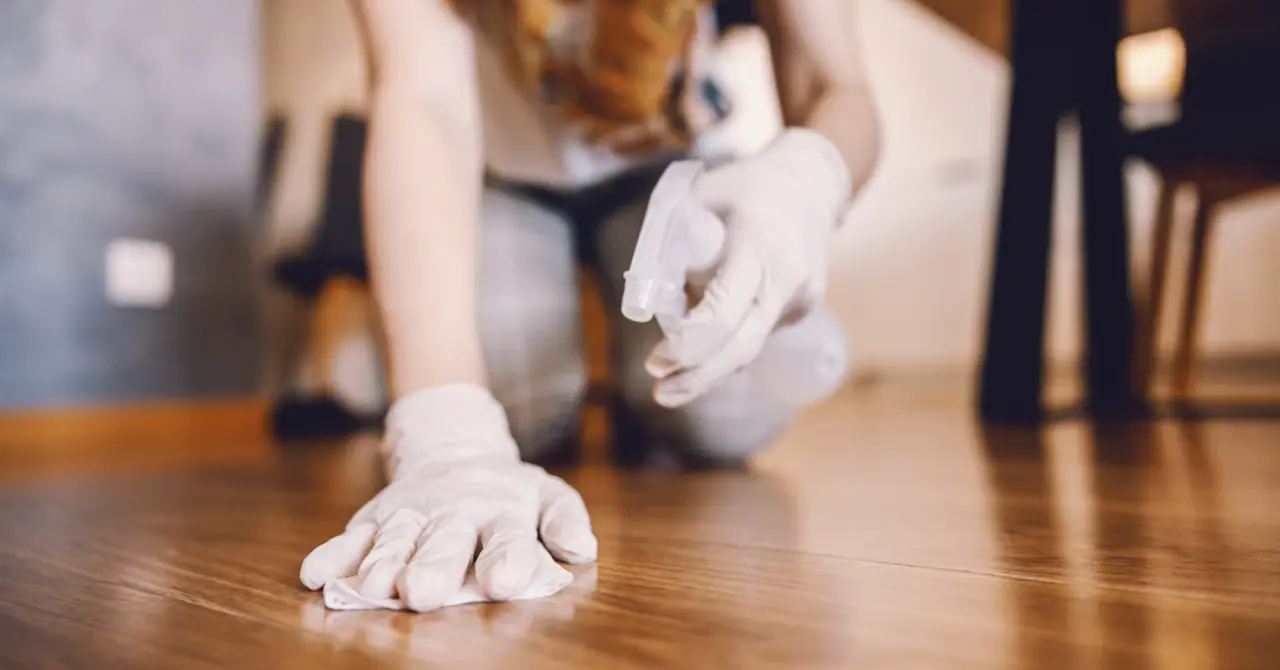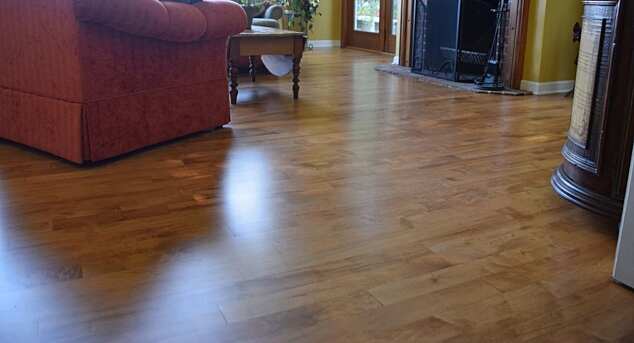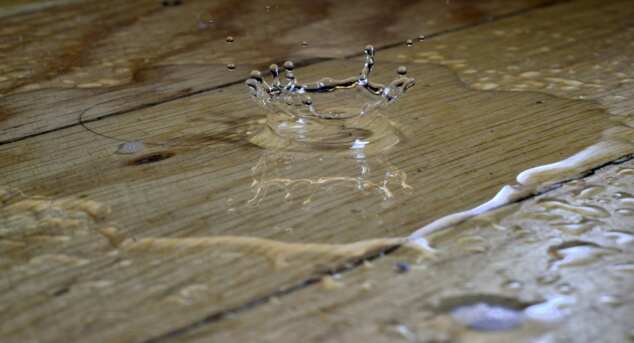Increase the Lifespan of Your Wood Floor by Using the Right Cleaner
Posted by Aaron Schaalma
Wood floors add warmth and elegance to any space. They are a significant investment that deserves proper care. Using the right wood floor cleaner is crucial for maintaining their beauty and longevity.
Many people overlook the importance of choosing the right cleaner. This can lead to damage and costly repairs. The right cleaner can prevent scratches, dullness, and other common issues. Different wood floors have unique needs. It's essential to understand your floor type and finish. This knowledge helps in selecting the best cleaner for your floors.
Avoiding harsh chemicals is vital. Some cleaners can strip the finish and harm the wood. Opt for pH-neutral or eco-friendly options for safe cleaning. Regular maintenance with the right products can extend your floor's life. It also enhances their natural beauty. Investing in quality cleaners now can save money on repairs later.
Why Choosing the Right Wood Floor Cleaner Matters
Different wood floors require specific cleaning solutions. A one-size-fits-all approach can lead to problems. The wrong cleaner may cause warping, discoloration, or wear.
For most wood floors, a pH-neutral cleaner is ideal. It maintains the floor's integrity without stripping its finish. Avoid harsh chemicals like vinegar or ammonia, which can be detrimental.
Selecting the right cleaner also impacts the environmental footprint. Eco-friendly options are safe for both your home and the planet. They offer effective cleaning without harmful residues.
Here are some key benefits of using the right cleaner:
Protects against scratches and dullness.
Maintains the finish and natural beauty.
Enhances longevity and reduces repair costs.
Choosing the correct cleaner for wood floors is more than a maintenance task. It's an investment in their beauty and durability.
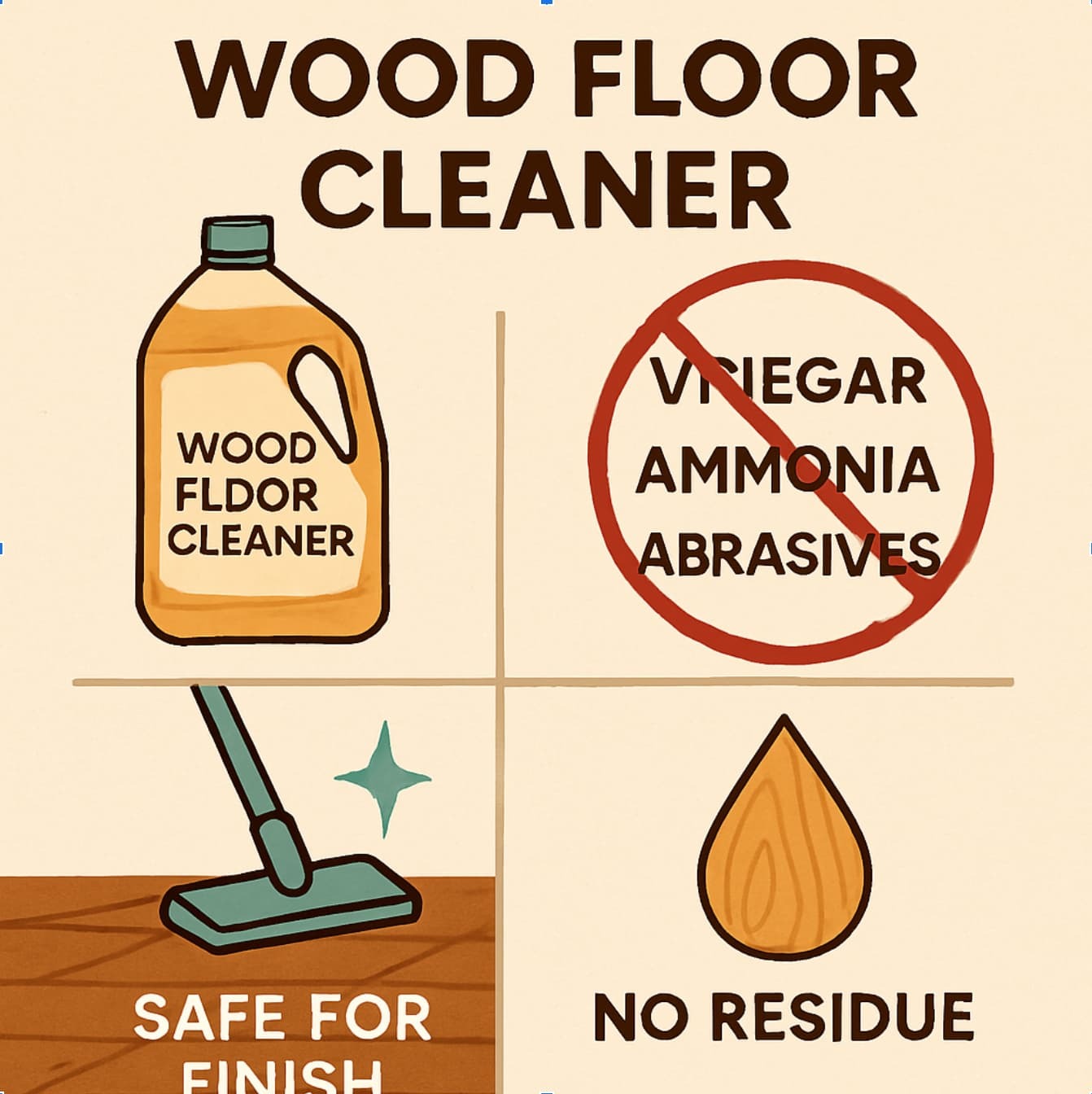
Understanding Your Wood Floor: Types and Finishes
Knowing your wood floor's type and finish is key to its care. Each type of wood has unique needs. Not all finishes react well to every cleaner.
Wood floors come in various types, such as solid hardwood, engineered wood, and laminate. Each requires different cleaning methods. For example, solid hardwood may have a different maintenance routine compared to laminate.
The finish on your wood floor can be oil, wax, or polyurethane. This finish protects the wood, but using the wrong cleaner can damage it. Polyurethane finishes are common and durable, but they need specific care.
To better understand your floor, consider these finishes:
Oil: Enhances grain, requires specific oil-based cleaners.
Wax: Provides a rustic look, avoid water-based products.
Polyurethane: Durable, clean with pH-neutral products.
Identifying your floor's type and finish ensures you're using the most effective cleaner. This avoids damage and extends the floor's lifespan.
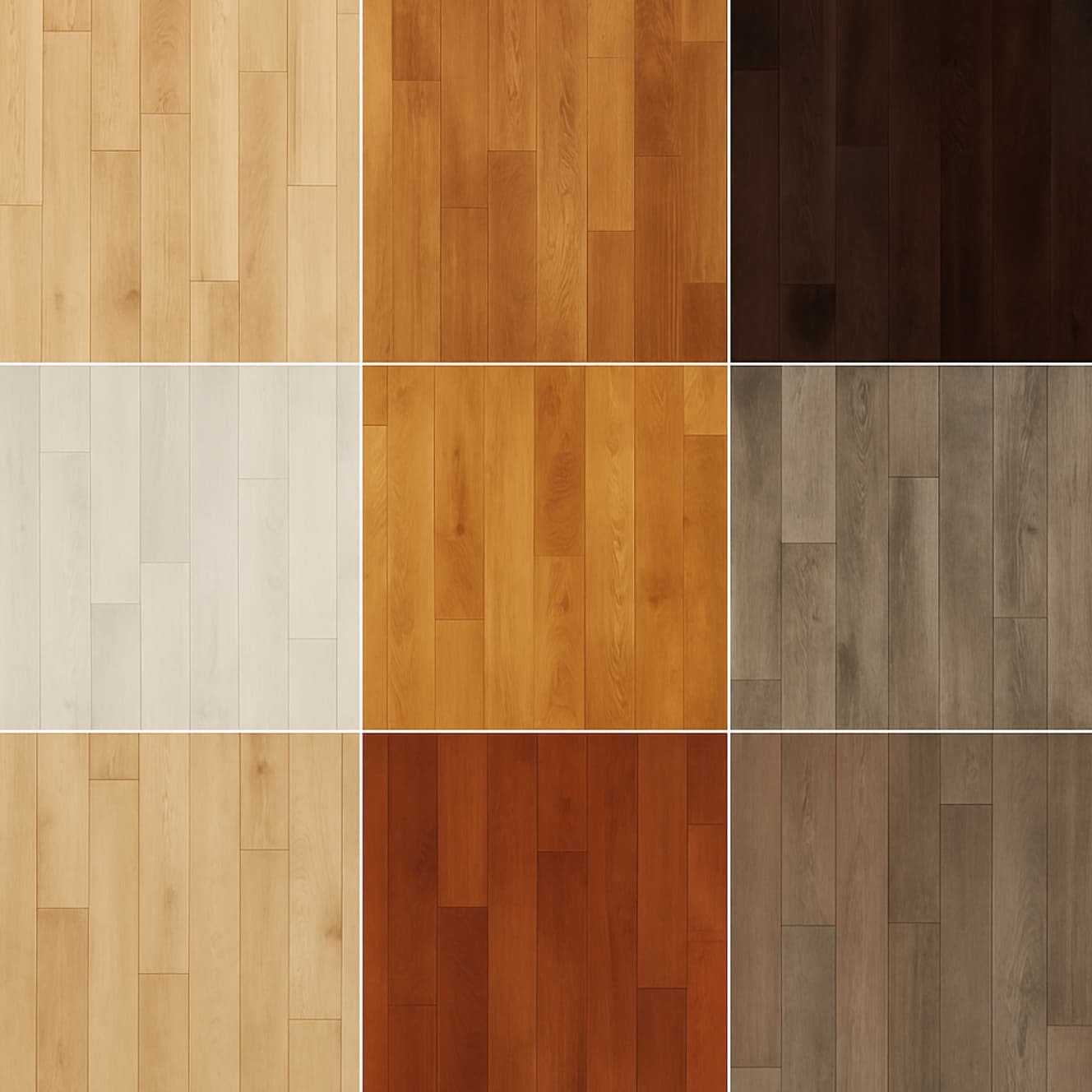
Common Mistakes to Avoid When Cleaning Wood Floors
Cleaning wood floors may seem simple, but many people fall into common traps. Using the wrong product can cause hidden harm. Some cleaners strip finishes, leaving floors vulnerable.
Water may appear harmless, but too much can warp wood. Always limit water exposure. Use a damp, not wet, mop for safety. Steer clear of steam mops, which can cause heat and moisture damage.
Another mistake is using abrasive tools. Avoid harsh scrubbers or stiff bristles that scratch surfaces. Opt for soft, microfiber mops and cloths. They clean gently without causing harm.
Check out these common mistakes:
Excessive water use: Leads to warping and swelling.
Using vinegar or ammonia: Strips protective finishes.
Neglecting manufacturer's advice: Choose cleaners recommended for your floor type.
By avoiding these errors, your wood floors will remain beautiful and last longer. It's easier to prevent damage than to repair it.
by Photo 11 (https://unsplash.com/@photo_11)
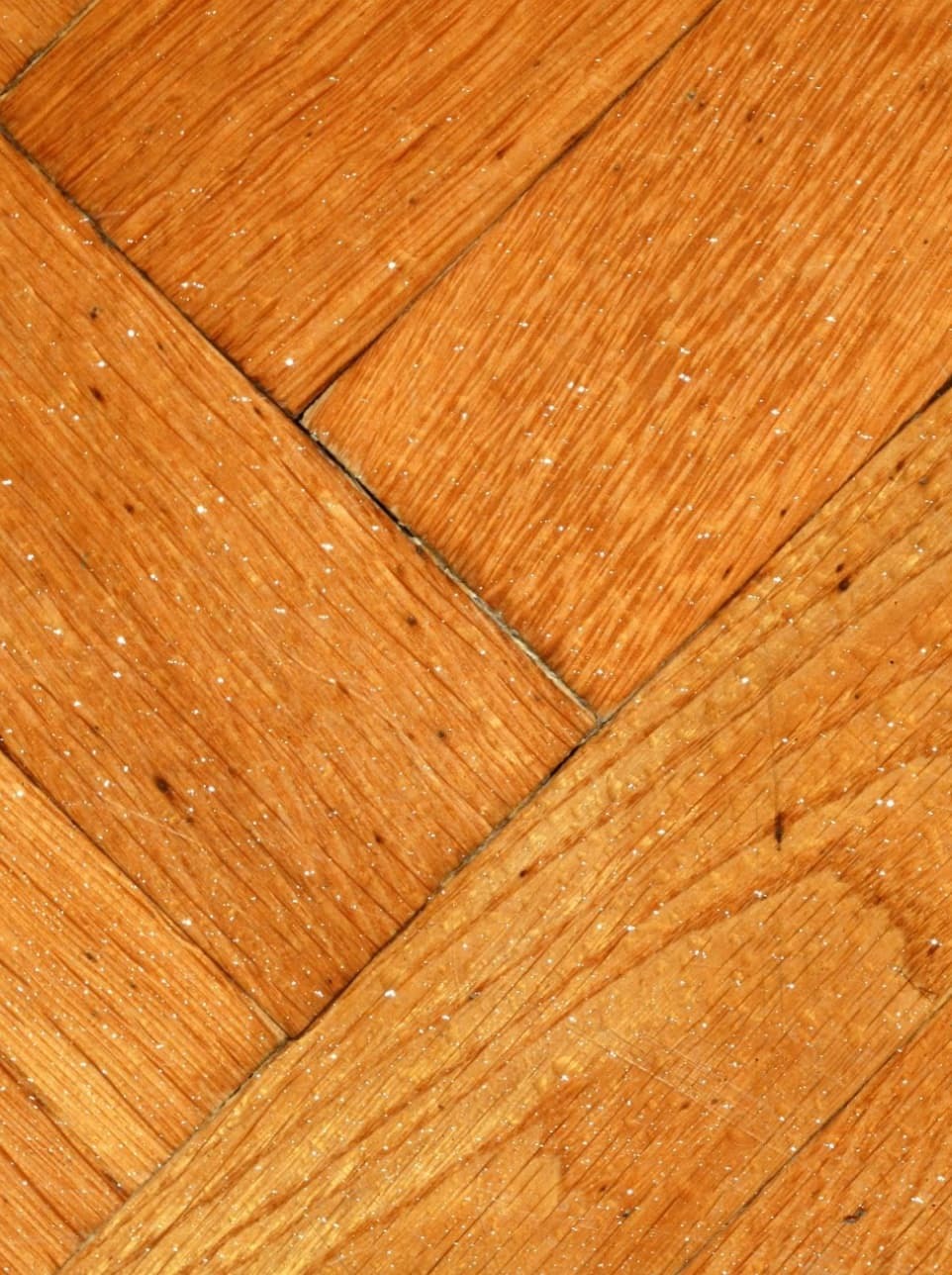
How to Select the Best Wood Floor Cleaner for Your Needs
Selecting the right wood floor cleaner involves considering your floor type. Different floors need tailored solutions. A cleaner suitable for one may damage another.
Consider the floor finish first. Floors with a polyurethane finish differ from those with oil or wax finishes. Check what your manufacturer suggests.
Choose a pH-neutral cleaner for general use. These cleaners are gentle and maintain finishes. Avoid those with acidic ingredients like vinegar.
Evaluate the specific needs your household may have. If you have pets, a cleaner that handles pet stains effectively is necessary. For those in busy households, quick-drying formulas are beneficial.
Here's a quick checklist:
Check your floor type and finish.
Opt for pH-neutral formulas.
Consider specialized cleaners for specific needs.
Examine eco-friendliness.
Test in a small area first.
Thoughtful selection now saves trouble later. The right cleaner extends floor life, preserving its beauty.Step-by-Step Guide: Cleaning Wood Floors the Right Way
Cleaning wood floors correctly ensures they last longer and look their best. Follow these steps for effective cleaning.
First, remove loose dirt and debris by sweeping or vacuuming. Use a vacuum with a hardwood setting to avoid scratches. This step prevents grit from damaging the surface during mopping.
Next, select your wood floor cleaner. Ensure it's suitable for your floor type and finish. For polished floors, select a compatible, pH-neutral cleaner.
Fill a bucket with your chosen cleaner. If it's concentrated, follow dilution instructions carefully. This avoids residue and protects your floor finish.
Use a microfiber mop to clean the floor. Microfiber is gentle and efficient, leaving no streaks behind. Dip your mop, wring out excess liquid, and start mopping. Mop in small sections, working your way across the floor. Avoid saturating the wood; excess moisture can lead to warping. After mopping, let the floor air dry.
Here's a concise guide:
Sweep or vacuum first.
Choose the right cleaner.
Dilute if needed.
Use a microfiber mop.
Mop in small sections.
Allow to dry thoroughly.
Following these steps helps ensure your floors are clean and protected.
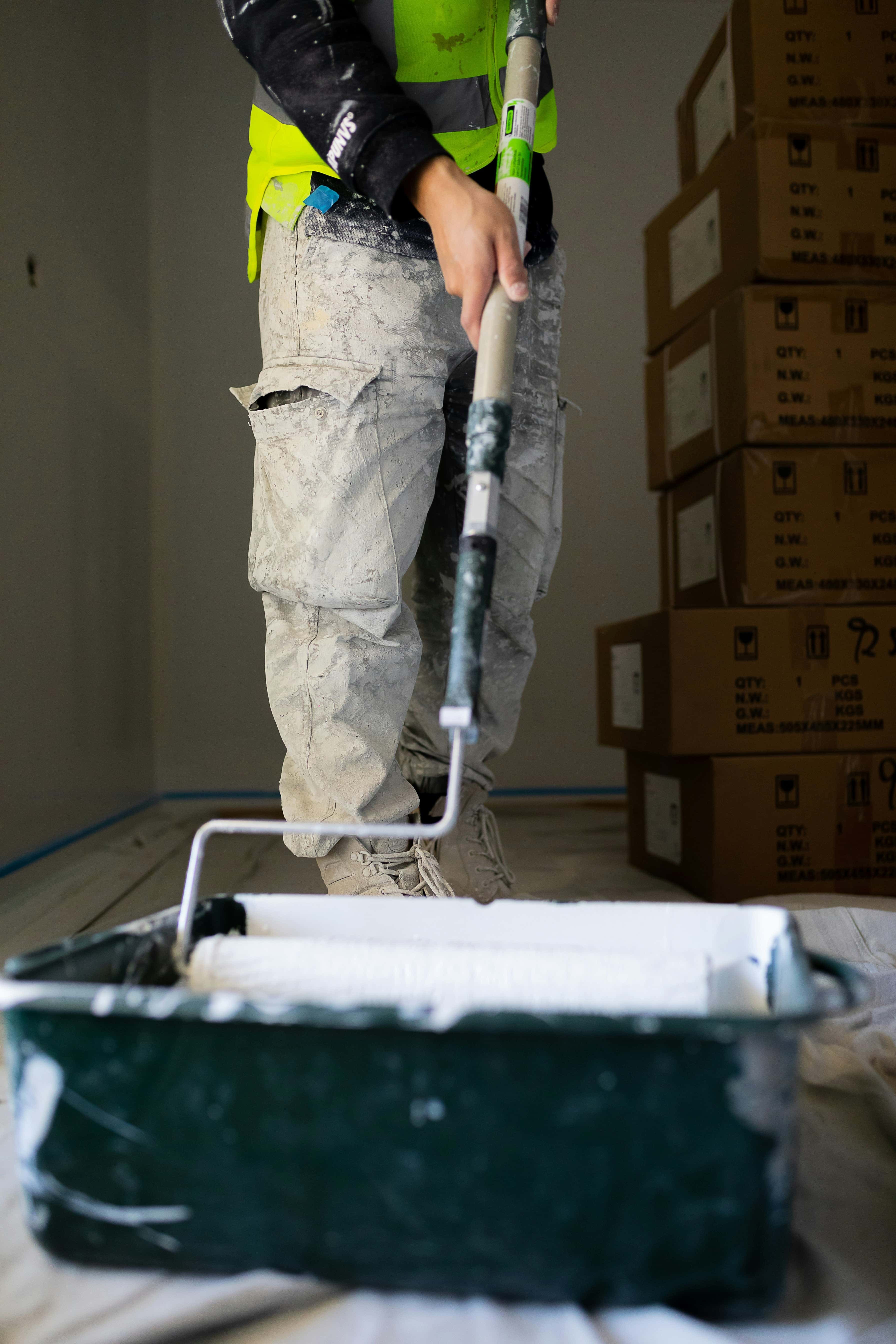
Eco-Friendly and Safe Options for Wood Floor Cleaning
Choosing eco-friendly options for wood floor cleaning is both responsible and effective. These cleaners are formulated without harmful chemicals. They provide a safe environment for family and pets.
Natural ingredients like plant-based oils and extracts are common in eco-friendly cleaners. These components not only clean effectively but also protect your floors. By using them, you can avoid harmful residues.
Eco-friendly wood floor cleaners can enhance the natural beauty of the wood. They maintain the floor's grain and color without causing damage. Your floors stay beautiful and protected with each clean.
Consider these benefits of eco-friendly cleaners:
Non-Toxic Ingredients: Safe for families and pets.
Biodegradable Formula: Reduces environmental impact.
Maintains Natural Aesthetics: Keeps floor's original charm.
Effective Cleaning: Cleans without harsh chemicals.
Using these options ensures your cleaning routine is as safe as it is effective.
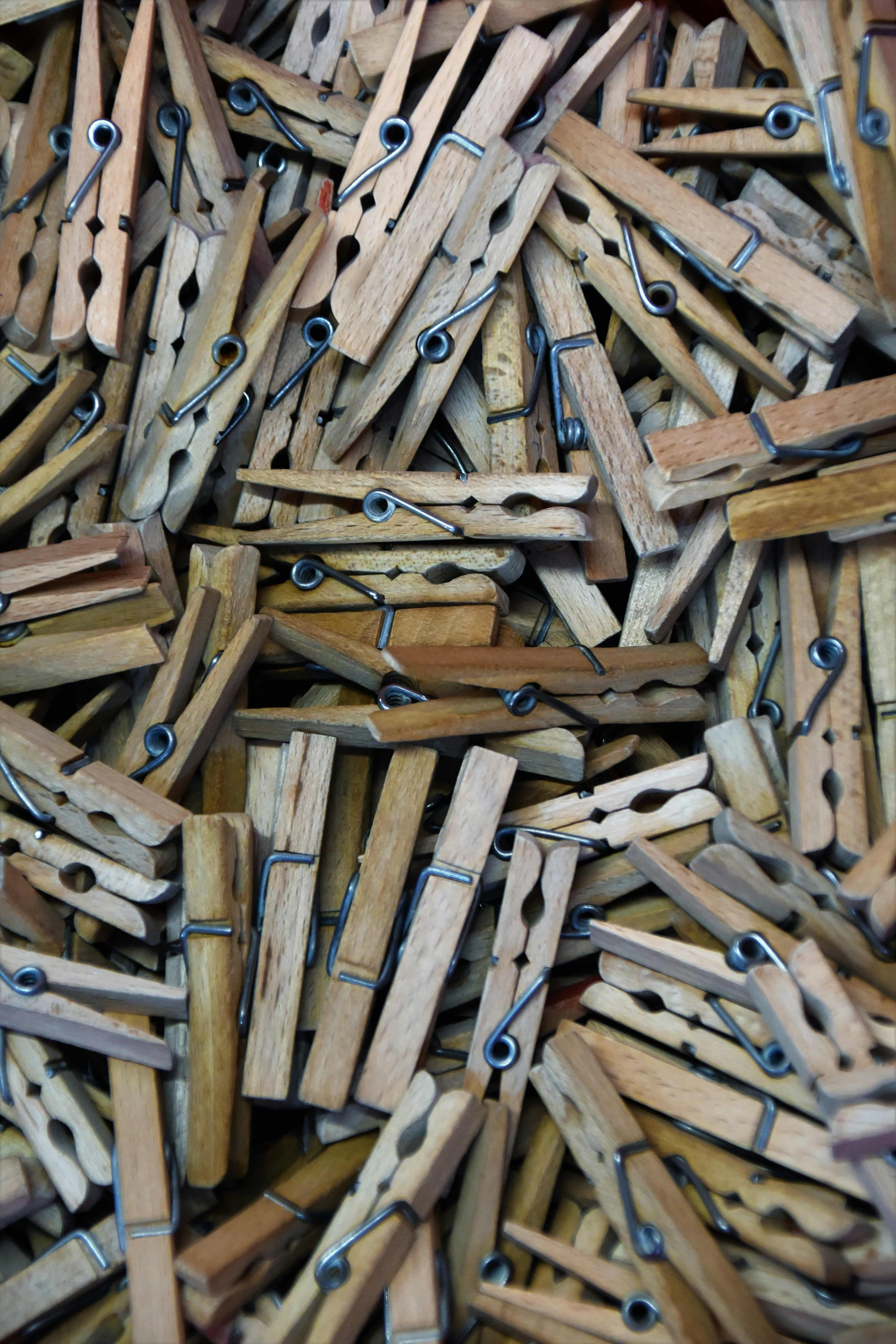
Maintenance Tips to Extend the Life of Your Wood Floors
Proper maintenance is key to extending the lifespan of wood floors. Regular care not only preserves their beauty but also their integrity. A few simple routines can make a significant difference.
First, ensure to sweep or vacuum your wood floors regularly. This prevents dirt and grit from scratching the surface. Focus on high-traffic areas where dust accumulates quickly.
Additionally, the use of rugs and mats is a smart way to protect entry points. They trap debris before it reaches the wood. This simple tip can drastically reduce wear.
Regular inspections are also essential. Look for signs of damage like scratches or moisture. Early intervention can prevent small issues from becoming big problems.
Consider implementing these tips for optimal care:
Regular Cleaning: Sweep or vacuum weekly.
Protective Rugs: Place at all entrances.
Moisture Control: Wipe up spills immediately.
Furniture Pads: Prevent scratches from movement.
These practices not only protect but also enhance the natural appeal of your wood floors.

Frequently Asked Questions About Wood Floor Cleaners
What is the best cleaner for wood floors?
The best cleaner depends on your floor type and finish. Always check the manufacturer's guidelines for recommendations.
Can I use vinegar on wood floors?
No, vinegar is acidic and can damage the floor's finish. Use pH-neutral cleaners instead.
Is it safe to use water on wood floors?
Use water sparingly and never on unfinished or waxed wood floors. Excessive water can cause warping.
Do wood floor cleaners remove stains?
Most specialized cleaners remove light stains and dirt. For tough stains, consult a professional.
How often should I clean my wood floors?
Regular sweeping and weekly cleaning are recommended. High-traffic areas might need more frequent attention.
Conclusion: Protect Your Investment with the Right Cleaner
Choosing the right wood floor cleaner is essential for preserving your floor's beauty and longevity. It prevents damage and enhances the natural grain, keeping your floors looking pristine.
By using suitable products, you avoid costly repairs and maintain your floors' value. Regular maintenance coupled with the right cleaner transforms wood flooring into a timeless investment that continues to impress for years. Protect your wood floors and enjoy lasting elegance.
